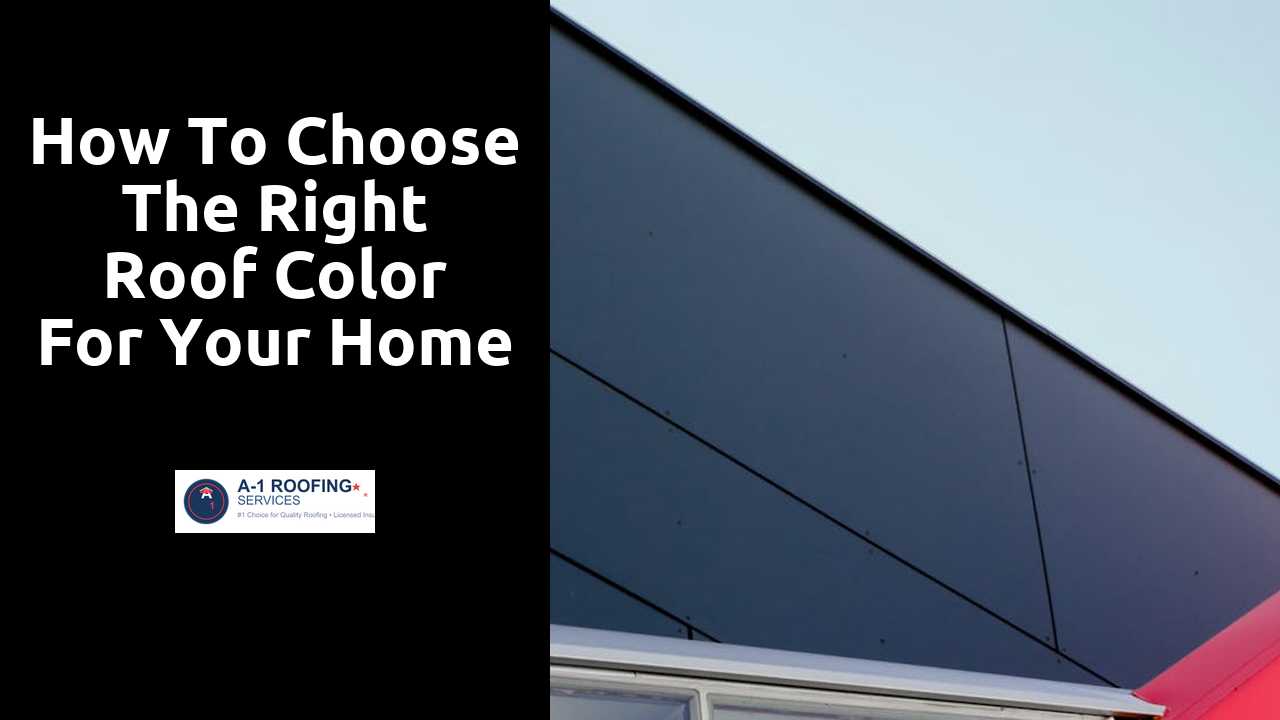
How to Choose the Right Roof Color for Your Home
Table Of Contents
Testing Roof Colors Before Installation
Choosing the right roof color involves more than just a visual preference. Homeowners should take the time to test different colors in real-life scenarios. Using physical samples or mock-ups can provide a clear indication of how a color will look under the various lighting conditions across the day. Observing potential colors in different weather can reveal how they interact with the environment.
There are also digital tools available that allow homeowners to visualize their roof with different color options using photo uploads of their house. These visualizers give a realistic portrayal of how changing the roof color will impact the overall aesthetics. This testing phase is crucial not only for ensuring satisfaction but also for making informed decisions that enhance the home’s curb appeal.
Click here for additional info.
Using Samples and Visualizers
Choosing the right roof color can significantly affect your home's curb appeal. One effective way to explore options is by utilizing physical samples of roofing materials. Many manufacturers offer swatches or small pieces of materials that can be taken home. Viewing samples in different lighting conditions helps homeowners see how colors shift throughout the day. This practical approach can clarify how a specific shade complements the exterior features of the home.
In addition to physical samples, numerous online visualizers can assist in the decision-making process. These tools allow users to upload photos of their home and experiment with various roof colors digitally. With just a few clicks, homeowners can see how different shades may enhance or alter their property's overall aesthetic. This interactive experience can make the selection process more engaging and straightforward, providing a clearer picture of what to expect once installation is complete.
Trends in Roof Color Choices
Homeowners are increasingly leaning toward muted, earthy tones when selecting roof colors. Shades like gray, brown, and slate blue have gained popularity for their ability to blend seamlessly with various architectural styles. These colors not only complement natural landscapes but also contribute to a home's overall aesthetic appeal. Additionally, classic colors such as black and dark charcoal remain timeless choices, offering a sophisticated look that can enhance property value.
The rising interest in sustainability is influencing roof color selections as well. Lighter shades that reflect sunlight are becoming sought after in warmer climates, helping to keep homes cooler and reduce energy costs. Furthermore, the trend towards environmentally friendly materials is prompting homeowners to choose coatings and finishes that offer durability while maintaining an attractive appearance. This emphasis on functionality, combined with design, is shaping how roofs are viewed in the context of home improvement.
Eco-Friendly and Sustainable Options
Sustainable roofing options have gained popularity as homeowners become more environmentally conscious. Materials such as metal, clay, and slate are often chosen for their longevity and recyclability. These choices reduce waste and lower the frequency of roof replacements, benefiting both the home and the planet. Additionally, choosing light-colored or reflective roofing materials can help mitigate heat absorption, leading to lower energy costs and reduced reliance on air conditioning.
Solar shingles represent another eco-friendly option, allowing homeowners to harness solar energy while providing protection and aesthetic appeal. Various companies now offer roofing products that integrate photovoltaic technology, making it easier to adopt renewable energy solutions. Innovations in roofing materials continue to emerge, promoting sustainability in both residential and commercial sectors. Adopting such options not only contributes to a greener future but can also enhance property value over time.
Regional Influences on Roof Color Selection
Regional influences heavily impact the selection of roof colors, shaped by climate, culture, and architectural styles prevalent in specific areas. In warmer climates, homeowners often gravitate toward lighter colors that reflect sunlight, helping to keep homes cooler. In contrast, regions with significant snowfall may see darker roofs, which absorb heat and facilitate snow melt. Local traditions and common design aesthetics also guide choices, with particular colors resonating with the historical context of neighborhoods or communities.
Building codes and zoning regulations can further dictate roof color selections in various regions. For instance, in historic districts, homeowners may be restricted to colors that match the area’s architectural integrity. New construction in suburban or urban settings might favor more modern palettes, aligning with contemporary design trends. Ultimately, understanding these local influences is crucial for homeowners seeking a harmonious balance between personal taste and community standards.
Local Building Codes and Heritage
When selecting a roof color, it's essential to consider the local building codes that may impact your choices. Many communities have specific guidelines regarding exterior colors to maintain a cohesive look and feel. These regulations can vary widely depending on the area, emphasizing the importance of consulting with local authorities or homeowners' associations before making a decision. Understanding these requirements can help ensure that your chosen color not only enhances your home’s aesthetics but also complies with neighborhood standards.
Heritage plays a significant role in influencing roof color selections, especially in historical neighborhoods. Homeowners often strive to honor the architectural styles and cultural significance of their homes by choosing colors that reflect the period in which they were built. This attention to detail can strengthen the connection between the house and its surroundings, contributing to the overall character of the community. Many older homes feature specific hues that were popular at the time of construction, making it a thoughtful approach to blend contemporary desires with heritage preservation.
Related Links
The Impact of Climate on Roofing Material SelectionEco-Friendly Roofing Materials for Sustainable Homes